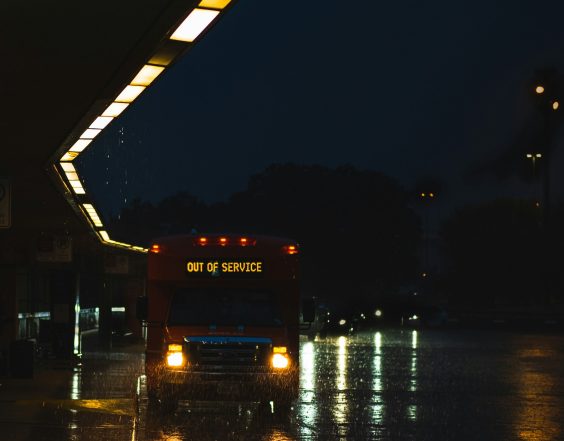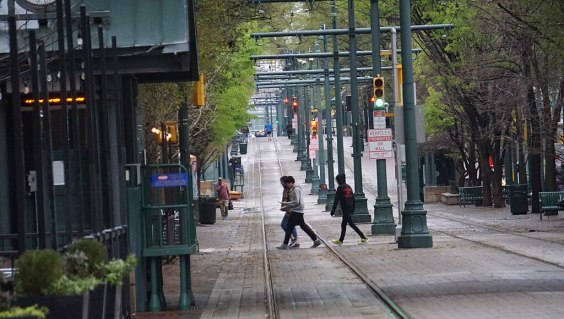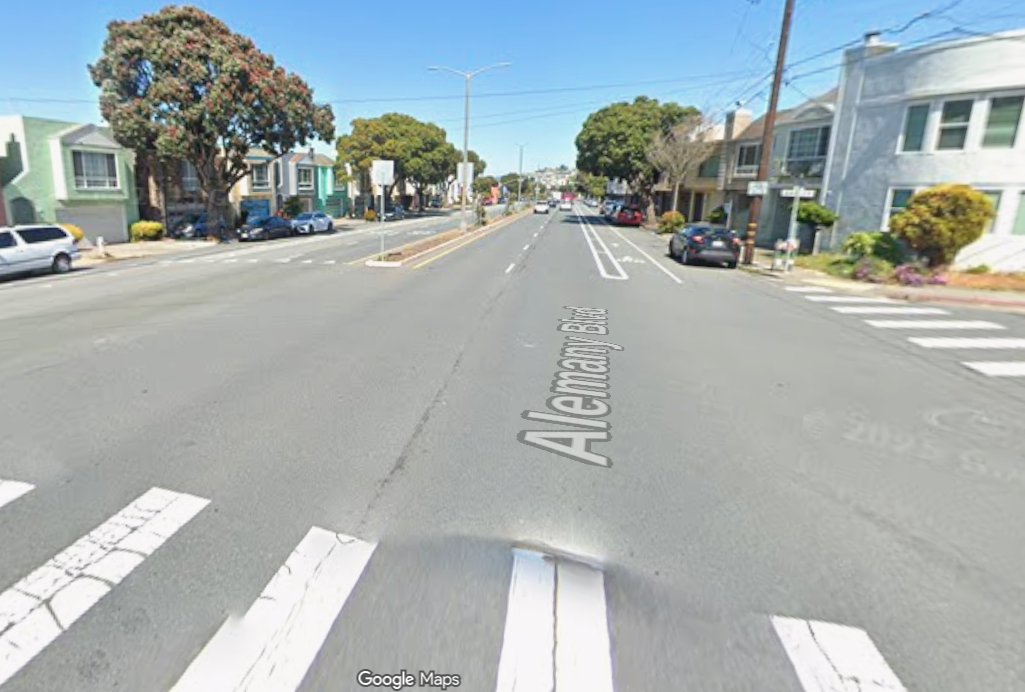 San Francisco's urban forest may look bushy and green, but below ground it's suffering.
San Francisco's urban forest may look bushy and green, but below ground it's suffering.
In order to pave a street, parking lot or sidewalk, the soil has to be tightly compacted to support the weight of asphalt and vehicles. Faced with hard-to-penetrate soil, tree roots have a difficult time expanding beyond their planting area -- sort of like confining a person to their baby shoes for their entire life.
As a result, city tree growth is often stunted, with a meager canopy, shortened life span, and escalating costs for maintenance and replacement.
And that's why DeepRoot, a national company with headquarters here in San Francisco, invented the Silva Cell.
"It's a modular framework for creating empty vault surfaces underneath hardscapes or paving," explained DeepRoot Marketing Manager Leda Marritz. "You can stack them one, or two or three high -- or higher -- and fill them with high-quality, lightly-compacted soil that's ideal for tree root growth."
The Silva Cell is like a Lego brick of tree-friendly soil, the kind of thing you might find at Ikea if they sold urban infrastructure.
Silva Cells are installed in the ground prior to paving, then paved over. Out of sight, they provide room for trees to expand, gaining water, nutrients, and structural stability.
"The vast majority of the street trees out there are suffering, and you can tell when you look at them," said Marritz. "On Market Street, for example, they're tall but they're in pretty bad shape. The canopy isn't thick or even, the leaves are clustered around the outer branches. They don't look like they would in a non-urban setting."
Unhealthy trees are expensive to treat and replace, but they cause other problems as well. Just last Tuesday, a tree at Fourth and Brannan split into pieces, collapsing onto cars. The tree was surrounded on all sides by an asphalt lot.
There are other consequences to unhealthy trees: They're less attractive to wildlife, which reduces the city's ability to support native species like songbirds and butterflies. And the tree's potential to reduce stormwater runoff is reduced, placing further strain on the city's overburdened sewage system.
DeepRoot's Brenda Guglielmina explained, "A tree that's just barely surviving every year is hardly pumping out any oxygen, hardly pumping water out of the ground. All that stuff just slows down, and it becomes a statue of a tree."
 Silva Cell installation at Lincoln Center in New York City. Image: DeepRoot.
Silva Cell installation at Lincoln Center in New York City. Image: DeepRoot."What's sweet about the Silva Cell is that it can simply backfill with the existing native soil," said Doug Wildman, Program Director at Friends of the Urban Forest.
"We know that some trees can do okay with a limited soil volume," he said, but "their lifetime may be shortened, and in some conditions we'll never achieve the volume that that tree requires."
Although he was cautious not to endorse the product without seeing more research about its efficacy, Wildman explained that space constraints often limit tree selection. "The size of the tree above ground is, in part, how we base the space," he said. "A large oak tree in the sidewalk would be kind of crazy in many situations, unless you had the space for it above and in the base itself."
So is the city of San Francisco on-board with Silva Cells? Not really. DeepRoot's Marritz explained that there is only one Silva Cell installation in San Francisco, beneath Mint Plaza. It dates back to early in the development of the product, and doesn't reflect the most up-to-date methodology.
The city's reluctance to adopt the technology is in part due to its cost, which varies widely from project to project. Also, unlike many other cities in the bay area, San Francisco doesn't have a legally required minimum soil volume. New developments in Palo Alto and Emeryville must devote a certain amount of below-ground space to trees; developments in San Francisco do not.
The Silva Cell's cost becomes far more competitive when developers have to find a way to accommodate minimum soil volumes, which is why the company has pushed for the requirement in many municipalities.
"If the city had been working on soil volume goals, it would be a lot easier to slot us in," said Marritz.
Guglielmina agreed. "When we can get the cities to put in a tree soil volume requirement, then we can follow behind that," she said, and described the company's work on the brand new tree-lined Hollis Doyle Park in Emeryville. "They left some trees in, and anyplace that they've replaced a tree, they've used Silva Cells.
"I know San Francisco is a great opportunity," she added, "but the city of Emeryville is all over our product, and I take the path of least resistance."
But the door hasn't closed completely on Silva Cells in San Francisco. Rosey Jencks, who heads up stormwater planning at the Public Utilities Commission, remained open to their eventual use. "We are not in the business of promoting proprietary products," she said, "but I'm sure we'd look at them if someone wanted to use them to comply with the stormwater regulations."
In fact, it's possible that in some situations, the Silva Cell's stormwater advantages may outweigh its advantages for tree growth. "Stormwater is a huge component of it," Marritz explained. "The Silva Cell provides a legitimate ecologically-based system for managing storm water on site."
But the technology is still only a few years old, and many observers are waiting for further study before committing to it. "In some ways, San Francisco is really ahead of the game," said FUF's Wildman. "This might be one area where we're holding back."
Indeed, it's often suburbs that adopt the Silva Cell before it spreads to nearby cities. "I can't tell you how many cities around Seattle used the Silva Cell before Seattle did," said Guglielmina. "I think it's easier to get through the politics in smaller cities."




